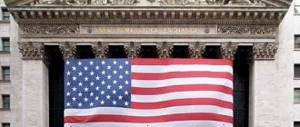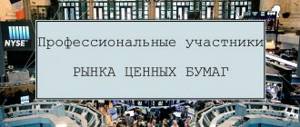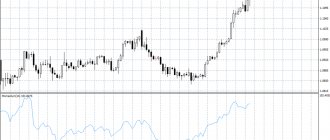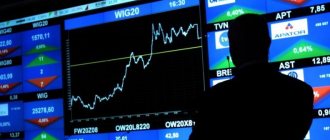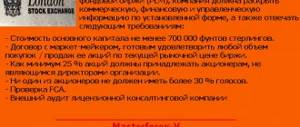Starcapital is another useful service to help investors (in addition to my selection of sites). Global stock market valuation ratios: for individual countries, regions, continents and the world as a whole. This is one of the best resources for assessing the global market, based on a number of indicators - CAPE, P/E, P/B, P/S, etc. - updated quarterly.
In simple terms: you can quickly find out how overvalued (or undervalued) the markets are at any given time.
From the description on the website...
Over the past 100 years, equity investors have achieved real capital growth of about 7% per year. No other form of investment - be it bonds, cash, gold or real estate - offers comparable return potential.
But is it worth investing in stocks at this point in time? And what kind of returns can investors expect over the long term? StarCapital monthly determines the relative attractiveness of 6,500 companies from 66 countries in 13 regions and 39 sectors.
Academic research has shown that undervalued equity markets provide higher future returns over the long term than their overvalued counterparts, which is true across a variety of valuation metrics.
The coefficients are presented graphically (on an interactive world map) and in the form of a summary table.
Rating of the 60 largest exchanges by their capitalization
According to the rating of the Masterforex-V Academy , updated monthly by capitalization of the TOP-60 world stock exchanges, which as of April 1, 2021 amounted to the following figures:
1. New York Stock Exchange – capitalization $23.211 trillion; 2. NASDAQ: No. 2 stock exchange in the world – capitalization $11.218 trillion. 3. Tokyo Stock Exchange – capitalization $5.608 trillion. 4. Shanghai Stock Exchange SSE – $5.013 trillion. 5. Hong Kong Stock Exchange HKE – $4.307 trillion. 6. Euronext exchange (Paris, Amsterdam, Brussels, Lisbon, Dublin) – $4.268 trillion. 7. London Stock Exchange LSE – $3.965 trillion. 8. Shenzhen Stock Exchange SZSE – $3.355 trillion. 9. Toronto Stock Exchange – $2.216 trillion. 10. Bombay Stock Exchange BSE – $2.179 trillion. 11. National Stock Exchange of India - $2.156 trillion. 12. Frankfurt Stock Exchange - $1.867 trillion. 13. Swiss Stock Exchange - $1,603 billion; 14. Korean Stock Exchange - $1,468 billion; 15. OMX Group Nasdaq Nordic Exchange (Vilnius, Iceland, Copenhagen, Riga, Stockholm, Tallinn, Helsinki, Armenian stock exchanges) - $$1.432 trillion. 16. Australian stock exchange ASX - $1.384 trillion. 17. Taiwan TWSE - $$1.041 trillion. 18. Johannesburg Stock Exchange (South Africa) - $0.950 trillion. 19. Sao Paulo Stock Exchange (Brazil) - $820 billion; 20. Madrid Stock Exchange - $0.770 trillion. 21. Singapore Stock Exchange - $0.715 trillion. 22. Moscow Stock Exchange MOEX - $636 billion 23. Saudi Stock Exchange (Tadawul) - $557 billion 24. Stock Exchange of Thailand (SET) - $535 billion 25. Malaysian Exchange (Bursa Malaysia, KLSE) - $409 billion 26. Mexican Stock Exchange (Spanish: Bolsa Mexicana de Valores, BMV) - $399 billion 27. Oslo Stock Exchange (OSE) - $293 billion 28. Philippine Stock Exchange (PSE) - $276 billion 29 Santiago Stock Exchange (Bolsa de Comercio de Santiago) - $254 billion 30. Tel Aviv Stock Exchange (TASE) - $207 billion 31. Istanbul Stock Exchange Borsa Istanbul, BIST) - $165 billion 32. Warsaw Stock Exchange (WSE) - $165 billion 33. Qatar Stock Exchange (QSE) - $156.93 billion 34. Abu Dhabi Securities Exchange - $140.91 billion 35. Stock Exchange Hochiminh Stock Exchange (HOSE) - $128.78 billion 36. Vienna Stock Exchange (Wiener Borse AG, WBAG) - $125.92 billion 37. Irish Stock Exchange (ISE) - $110.47 billion 38. Taipei Stock Exchange of Taiwan (Taipei Exchange) - $103.8 billion 39. New Zealand Exchange - $95.8 billion 40. Dubai Financial Market (DFM) - $95.65 billion 41. Casablanca Stock Exchange (Bourse de Casablanca, ESG) - $58.28 billion 42. Luxembourg Stock Exchange (LuxSE) - $49.41 billion 43. Egyptian Exchange (EGX) - $47.20 billion 44. Buenos Aires Stock Exchange (Spanish) Bolsa de Comercio de Buenos Aires) - $40.83 billion 45. Kazakhstan Stock Exchange (KASE) - $37.21 billion 46. Tehran Stock Exchange (TSE) - $33.83 billion 47. Nigerian Stock Exchange (NSE) - $31.83 billion 48 Budapest Stock Exchange (BSE) - $30.69 billion 49. Bucharest Stock Exchange (BSE) - $21.75 billion 50. Zagreb Stock Exchange (ZSE) - $20.58 billion 51. Muscat Securities Market of Oman (Muscat Securities Market, MSM) - $17.46 billion 52. Panama Stock Exchange (Bolsa de Valores de Panama) - $15.71 billion 53. Beirut Stock Exchange (BSE) - $9.62 billion 54. Stock Exchange of Mauritius (BSE) - $9.44 billion 55 Hanoi Stock Exchange (HSE) - $8.65 billion 56. Tunis Stock Exchange (TSE) - $7.90 billion 57. Ljubljana Stock Exchange Ljubljana Stock Exchange (LSE) - $7.53 billion 58. Malta Stock Exchange (MSE) - $5.29 billion 59. Ukrainian Exchange (UE) - $3.95 billion 60. Cyprus Stock Exchange Exchange, CSE) - $3.93 billion.
Thus, the capitalization of 60 exchanges in the world as of April 1, 2019. amounted to $84.86 trillion, which is 5.01% higher than on January 1, 2019.
TOP 10 world exchanges
If you ask what is the largest stock exchange in the world, many will answer that the largest stock exchange in the world is the New York stock exchange. Some will also remember the Nasdaq, London and Frankfurt stock exchanges. What other ones are there?
The total capitalization of all public companies at the end of 2021 amounted to $79.2 trillion (World Bank data). As of June 2018, this figure has grown to $84 trillion.
Let's look at the TOP 10 world exchanges based on the capitalization of companies traded on them.
1) New York Stock Exchange (NYSE) - USA
The history of the New York Stock Exchange dates back to the 24 brokers and traders who signed the Buttonwood Agreement on May 17, 1792. The first stocks traded were Bank of New York securities, which, together with several government bonds, made up the entire list of securities available on the New York Stock Exchange. bidding Today, the New York Stock Exchange is the largest in the world and belongs, together with Euronext, to the largest exchange holding company - Intercontinental Exchange (ICE). The NYSE market capitalization as of June 2021 is more than $23 trillion, which is more than the total capitalization of the European market exchanges. There are 2,292 companies on the quotation list; the daily turnover of the stock market is approximately $1.5 trillion.
2) National Association of Securities Dealers Automated Quotation (NASDAQ) - USA
In 1971, NASDAQ became a kind of innovative breakthrough in the capital markets, the progenitor of electronic trading. Created as a result of the desire of the US Congress to systematize trading, the NASDAQ exchange became associated with the high-tech sector of the economy. NASDAQ is currently the second largest exchange in the world. The capitalization of traded companies is more than $11 trillion, with 3,004 issuers listed. And the average daily turnover for June 2021 is at $1.3 trillion.
3) Japan Exchange Group (JPX) - Japan
As a result of the merger of Japan's two largest exchanges (Osaka Securities Exchange and Tokyo Stock Exchange), the third largest trading platform in the world was formed - Japan Exchange Group. The official opening date of the JPX is January 1, 2013, but the Tokyo and Osaka exchanges began operating in 1878. The market capitalization as of June 2021 is more than $6 trillion. There are 3,628 companies listed, and trading volumes average around $0.5 trillion.
4) Shanghai Stock Exchange (SSE) - China
Mainland China's largest trading platform, Shanghai Stock Exchange, began trading in the 1860s. SSE is a non-profit organization governed by the China Securities Regulatory Commission. A distinctive feature of the exchange is trading in two types of shares. The first type is traded in yuan and is available to all investors. The second type is denominated in US dollars and was initially available only to non-residents. Since 2014, restrictions have been lifted, which has borne fruit. Since that moment, market capitalization has almost doubled to $4.5 trillion, and turnover over 4 years has grown to $470 billion.
5) Euronext - European Union
Euronext, in becoming the largest exchange in Europe, took the path of active mergers and acquisitions. The birth of the site occurred in 2000 as a result of the merger of the Paris, Brussels and Amsterdam stock exchanges, the oldest in the world. Later they were joined by the Lisbon Stock Exchange. Four years later, in 2006, the combined platform came under the control of the NYSE Group, forming NYSE Euronext, which was purchased by the ICE holding in 2013, forming the largest global trading platform. Euronext was spun off into a separate company with a market capitalization of $4.3 trillion and daily turnover of $200 billion.
6) London Stock Exchange (LSE) - UK
The history of the London Stock Exchange dates back to 1698 at Jonathan's Coffee House, when John Castang began issuing a detailed list of market prices called "The Exchange Rate and Other Things" every Tuesday and Friday. At that time, salt, coal and paper were actively traded. These days, LSE is one of the most international platforms due to the large volume of depositary receipts in circulation. In terms of the number of companies on the quotation list, the exchange is twice as large as Euronext, with almost the same capitalization.
7) Hong Kong Stock Exchange (HKEX) - China
The Hong Kong securities market was officially established in 1891 when the Hong Kong Stock Traders Association was founded. It was renamed the Hong Kong Stock Exchange in 1914. Having united 3 more exchanges, by 1986 the HKSE had become one of the flagships of the Chinese securities market. Today, the market capitalization is more than $4.2 trillion with a daily turnover of $205 billion.
 Shenzhen Stock Exchange (SZSE) - China
Shenzhen Stock Exchange (SZSE) - China
The Shenzhen Stock Exchange is similar to the Shanghai Stock Exchange. It is also under the wing of the China Securities Regulatory Commission. Trading is carried out in two types of shares, and the exchange is one of the ten largest trading platforms in the world. If we draw an analogy with the largest US exchanges, then the Shenzhen Stock Exchange is the Chinese NASDAQ. Based on the SZSE, ChiNext opened in October 2009, a trading platform specializing in attracting innovative and fast-growing companies. Today, the Shenzhen Stock Exchange lists 2,115 companies, 730 of which belong to ChiNext. The total market capitalization is $3 trillion.
9) Deutsche Borse - Germany
The Deutsche Börse exchange group ranks ninth in the ranking of the world's largest exchanges. In 1585, when a number of traders decided to standardize exchange rates for different currencies used in Germany, the Frankfurt Stock Exchange was formed - one of the key assets of the Deutsche Börse. In addition, the group includes the Eurex exchange, which specializes in trading derivatives, and the clearing and settlement organization Clearstream. Distinctive features of Deutsche Börse are the smallest quotation list among the largest exchanges - only 509 items and rather low average daily turnover.
10) Bombay Stock Exchange (BSE) - India
The Bombay Stock Exchange began in the 1850s under the banyan trees in front of the town hall, where Horniman Circle is now located in Bombay (Mumbai). As the number of brokers kept increasing and there was not enough space, they filled the streets and became a nuisance. Finally, in 1874, the brokers found a permanent location on Dalal Street, where today BSE Ltd is located, the first ever stock exchange in Asia, whose official founding date is 1875. Despite its early start, BSE is losing out to its Chinese and Japanese competitors in terms of capitalization ($2.1 trillion) and turnover ($45 billion). At the same time, the number of companies in the listing totals 2,663 items, which is the 3rd best result in the ranking and 5th in the world.
Out of competition - Moscow Exchange
As of June 2021, the Moscow Exchange ranks honorably 22nd out of the 81 largest exchanges in the world with a capitalization of about $620 billion and an average turnover of $12 billion. The history of the Moscow Exchange (formerly MICEX) began with currency auctions that Vnesheconombank of the USSR began holding in 1989. It was then that For the first time, the market exchange rate of the ruble to the dollar was established. In 1992, the Bank of Russia and the largest commercial banks officially established the Moscow Interbank Currency Exchange. In the 90s, in addition to currencies, GKOs, shares and futures entered trading. The calculation of the RTS and MICEX index (now the Moscow Exchange index) begins. Having merged with the second largest Russian trading platform RTS in 2011, the single exchange was named the United MICEX-RTS Exchange, later changing to the Moscow Exchange.
What does it all look like
Together, the 10 largest exchanges in the world form about 77% of the global stock market capitalization or $65.6 trillion.
The daily trading volume of shares is more than $5 trillion, which is 40% of global turnover, with 22% occurring exclusively on the NYSE and NASDAQ.
Shares of 24 thousand issuers are available for trading. JPX leads here, with about 7% of all global issuers to be found - this is where you can really diversify your portfolio.
Open an account
BCS Broker
What is national stock market capitalization?
This is the total value of ALL securities listed on the country's stock exchanges - shares, bills, depositary receipts, certificates of deposit, bonds, checks, derivatives, mortgages, warrants, savings certificates, etc., purchased for “real money”, but having a form and criteria valuable papers.
US stock market capitalization
By capitalization of $34.429 trillion. (NYSE and NASDAQ) as of April 1, 2019 The US stock market still ranks 1st in the world with 3.93%, which is below the world average of 5.01% for this period.
Forecasts on the prospects for capitalization of the US stock market are best made based on 2 American stock indices - S&P 500 and Dow Jones 30. For the 1st quarter of 2021. a medium-term flat was noted within the long-term bull market. Both indices are moving steadily upward, confirming the strength of the bullish trend in the growth of capitalization of the US stock market and its securities, although with a significant drop in growth rates.
Share price. Types of shares
Securities - shares - are title deeds that certify the owner's ownership of assets.
The amount of money indicated on a share is its par value, and the price at which the share is sold on the market is the share price.
The market price of shares and other securities (bonds, warrants, subscription rights, etc.) is determined by supply and demand for them. A violation of the market equilibrium of securities leads to either an increase or a fall in their rate, i.e., their market price.
In conditions of market equilibrium, the determining influence on the price of shares is exerted, on the one hand, by the income received from them (dividends, interest), on the other hand, by the established interest rate.
The stock price is directly dependent on the dividend received on it and inversely dependent on the interest rate (interest rate):
A k = D : P · 100%, where A k is the stock price; D - dividend, or income received per share; P is the interest rate.
The stock price can be calculated if the dividend rate is known, which is determined by the ratio of the dividend to the par value of the shares:
D n = D : A nom · 100%, where D n is the dividend rate; A nom - the nominal value of the share.
Knowing the dividend rate, the par value of the share and the interest rate, you can determine the share price:
A k = D n : P · A nom.
The stock price indicates the amount of money for which, by investing it in the bank, the owner can receive interest (income on the deposit) equal in value to the dividend. The bank interest rate acts as a kind of guideline for the selection and placement of money by each business entity.
Assessing the economic situation on the market, the owner of money makes a choice based on the preference for maximizing income or minimizing risk (buying shares or placing money in a bank).
Common (ordinary) shares provide income depending on the profit of the enterprise. Therefore, holders of common shares are interested in improving the results of the enterprise’s economic activities. They are given the right to elect members of the company's board and decide other economic issues. The owner of shares, in addition to the right to dividends, has the right to vote and the right to be elected to the management of the corporation.
There are shares that do not give their owners voting rights. These are preferential, or preferred, shares. The appearance of such shares on the market is associated with attempts by corporate management to find a compromise between the desire to attract new investors and the reluctance to share the right to control the corporation by giving shareholders voting rights.
Preferred shares occupy an intermediate position between bonds and common shares. Such shares provide stable income regardless of the results of the enterprise's economic activities and do not give voting rights to their owners. Owners of preferred shares have priority in recovering the value of share capital in the event of liquidation of the enterprise.
Among preferred shares, cumulative, returnable, exchangeable, or convertible, and shares with the right to participate are distinguished.
For cumulative shares, dividends may not be paid for a certain period of time (in an unfavorable situation for the joint-stock company), but with the onset of better times, the accumulated dividends are reimbursed to their owners before the owners of other types of shares.
Returnable, or revocable, shares are recalled by the enterprise from their owners by a certain date at a predetermined price.
Owners of convertible shares can be guaranteed to exchange them for ordinary shares in a certain proportion upon the expiration of a specified period.
“Participating” shares allow their holders to share in additional profits with the holders of common shares if the dividends received on the common shares are greater than the dividends received on the preferred shares.
There are shares with an adjustable dividend rate that generate income that changes quarterly depending on the dynamics of the combination of interest rates and rates of financial market instruments (bonds, etc.).
The choice of issuing any type of preferred shares depends on the specific situation and the goal set (the more types of shares are issued, the more money holders they will attract).
A special place is occupied by founding shares, which give the founders of the enterprise advantages: an additional number of votes at a meeting of shareholders, election to the governing bodies, etc. Gradually, such privileges lose force and the enterprise is controlled on the basis of ownership of a block of shares.
European stock market capitalization
By capitalization in Euronext, LSE, Frankfurt Stock Exchange, Swiss, OMX Nasdaq Nordic, Spain, Norway, Poland, Ireland, Luxembourg, Hungary, Romania, Croatia, Slovenia Cyprus - $14.6 trillion. as of April 1, 2019 Europe's stock market still holds its place globally at 4.83%, down 0.18% from the global average of 5.01% for the period.
We track prospects and forecasts for the capitalization of the European stock market using the DAX 30 (Germany) and CAC 40 indices on Euronext Paris. Pay attention to the relative weakness of the German index in relation to the French one, which will probably surprise many who are accustomed to hearing from analysts about the “leadership” of the German economy within the European Union.
XX century
At the end of the 20th century, there was a significant and rapid development of the financial industry in advanced countries, as well as the emergence and emergence of the platform in developing countries with economies in transition. If we take into account the last fifteen years, trading of shares on the world exchange has increased almost ninety times, and the liquidity of the stock industry at the end of the 20th century was only 1%, while now this figure is already equivalent to 1255 percent. Enormous progress and a good current indicator, right?
Even before the war, stock exchanges were observed only in developed countries, and this was a problem, but today even in the most backward countries you can find large traders and companies listing their shares on exchanges, trading platforms and sites. It is noted that about half of all world stocks and bonds are placed in the United States of America, and the G8 countries account for more than 75% of the total world trade volume.
In the mid-20th century, liberal sentiment in the economy grew across the planet, a shift away from output was observed, and the growth and development of a model based on bank lending began. The Americans were the first to liberalize the economy, and the NYSE stock exchange for the first time abolished the fixed transaction fee, switching to percentage commissions.
The British abolished capitalization controls in 1978, and industry deregulation, which was called the Big Bang, happened 8 years later. At the end of the eighties of the last century, capital controls were lifted in most European countries and in Japan, which became a powerful catalyst for the development of the world market in the nineties of the last century.
The platform is becoming more and more global: trading is carried out everywhere and at any time of the day. The industry is based on the assets of large multinational companies. Trading takes place online.
China stock market capitalization
By capitalization of $12.67 trillion. (Shanghai Stock Exchange SSE, Hong Kong Stock Exchange HKE, Shenzhen Stock Exchange SZSE) as of 04/1/2019. China's stock market still ranks 3rd in the world with 17.56%, up 12.55% from the world average of 5.01% over the period.
Prospects for the capitalization of the Chinese stock market can be seen online on the charts of the Chinese SSE Composite and SZSE Component Index (SZI). These graphs also indicate that the US and EU stock markets are more attractive to investors than... the Chinese one.
Japanese stock market capitalization
According to the capitalization of the Tokyo Stock Exchange at $5.61 trillion. as of April 1, 2019 Japan's stock market ranks 4th in the world at -0.36%, below the global average of 5.01% for the period.
By analogy, we track the dynamics of the capitalization of the Japanese stock market using the charts of the TOPIX Core 30 index (blue chip index on the Tokyo Stock Exchange) and the NIKKEI 225 Index. It is easy to see that the capitalization of the Japanese stock market is experiencing significantly more problems than its competitors in the USA, EU and China .
Indian stock market capitalization
According to the capitalization of the Bombay and National Stock Exchange of India at $4.33 trillion . as of April 1, 2019 India's stock market ranks 5th in the world at 9.57%, up 4.56% from the global average of 5.01% for the period.
The prospects for the capitalization of the Indian stock market can be seen in the graphs of the BSE SENSEX 30 indices of the Bombay Stock Exchange and the NIFTY 50 of the National Stock Exchange of India. The graphs clearly show that the capitalization of the Indian stock market is proceeding at an accelerated pace and the day is not far off when it will overtake the Japanese stock market in this criterion. going through far from the best of times.
Capitalization of the Russian stock market
By capitalization, the Moscow Stock Exchange MOEX is $0.64 trillion. as of April 1, 2019 the growth of the stock market of the Russian Federation in the world from -0.81%, which is below the world average of 5.01% for this period.
We track forecasts for the capitalization of the Russian stock market using the RTS chart, the main dollar index of the Moscow Exchange. The same problems are visible as in the Japanese stock market - flat, with a serious prospect of a fall in dollar equivalent, despite the “ruble” growth of the second Russian stock index “Moscow Exchange Index (MICEX)”.
How much does investment in the USA bring?
Active speculation carries great risks for a private investor. Investing for a long-term period (from 3 years) carries greater logic for your investments and reduces the risk of losses.
What to buy and how much can you earn? Over the long term, markets generally grow (there are exceptions).
For the average investor, one of the safest investments is investing in an index. One of the most popular is in the S&P500. It is used as an underlying asset for calculations by many global investment companies.
In ETFs or mutual funds. Dozens of options. At the same time, there is one calculation base - this index. The cost of the offered instruments is stipulated by the rules of a particular investment company/fund.
The usual tolerance for price deviation from the underlying asset is no more than a few percent. Maximum. To select fund shares, we look at the behavior of the underlying asset to analyze it. For example, how the S&P500 has changed since the beginning of 2021. The index growth for January 2021 was 43%.
Data from investing.com.
An investor can count on this amount of income in US dollars by investing their money in 2021. If the income is converted into rubles, it can be adjusted due to the ruble/dollar exchange rate. In January 2021, the average rate was 60 rubles. for a dollar. Today 62.5. Due to the weakening, income in rubles is higher.
On average, US dividend stocks can yield between 2 and 6 percent per year. In dollars.
Capitalization of the Ukrainian stock market
According to the capitalization of the Ukrainian Stock Exchange UX is $0.039 trillion. as of April 1, 2019 The growth of the Ukrainian stock market was -9.82%, which is below the world average of 5.01% for this period. The market is de facto “dead”. According to Eric Nyman, the main reason is the “dominance and absolute power of the oligarchs” - owners of Ukrainian banks interested in deposits of Ukrainian citizens, and not in their investments in shares, stock indices and other securities of the Ukrainian Exchange.
Transnational exchange
The transnational exchange began to be created as a result of the global export of capital from the states that own leading international organizations and banks. The creation was accelerated due to several reasons:
- the rapid scientific and technological revolution, which entailed the creation of projects that require attracting investment capital from abroad;
- evolution of integration procedures;
- characteristic stability of the exchange rate and stock exchange quotes;
- the use of common multinational currencies;
- achievements in the evolution of the banking and stock exchange sectors.
Considering the fact that most states on the planet are developing at the same pace in the conditions of computerization in which scientific and technological progress takes place, that is, very rapidly, standard sources of attracting capital no longer satisfy the needs of large companies and states for capital. The world's largest companies, states and corporations began to look for inexpensive financial instruments by issue, the stock indices of which meet their needs. The colossal increase in demand from borrowers, the expansion of supply and demand due to the integration of national exchanges, the rapid increase in competition due to the opening and globalization of the world economy have caused a decrease in the role of banks and an increase in the influence of investment work and lending activities.
The transnational industry is a factor that accelerates economic interstate development, facilitating access of economic entities and entities to foreign exchange investment instruments. Now it is very simple to become the owner of shares of a company from another country: you do not need to fly anywhere, draw up paper agreements and negotiate - you just need to select the number of shares you want to purchase and click on the “buy” button from your broker.
Stock market capitalization forecasts
According to the canons of Masterforex-V, forecasts for capitalization of stock markets are based on the following axioms of the new technical analysis of the MF:
- according to the long-term trend, the capitalization of stock markets is growing for about a decade between financial and economic crises in the world (1987 / 1998 / 2008 / 2021 or 2020, if you do not count your own cataclysms on the stock exchange, such as the dot-com crisis), which is clearly visible in chart No. 1 of the DJIA index — The Dow Jones Industrial Average for 2009-2019. indicating recommendations for opening Buy orders before each subsequent bullish impulse.
- according to the medium-term trend, weekly analysis is required through indicators and oscillators of the Masterforex-V Academy, as in chart d1 with prompts from 3 proprietary Masterforex-V tools (out of more than 30) - levels of order accumulation (resistance and support), AO_ZOTIK and WPR_VSMARK .
I hope it’s not at all difficult, as you have already noticed.
If you decide to learn at least the basics of the new technical analysis Masterforex-V - click on the link Professional training in Forex and Exchange at the MasterForex-V Academy. This is useful not only for traders and investors, but also for everyone who works professionally in the economic and financial spheres. For what? To know something that will remain Terra Incognita forever for your colleagues who do not understand how you can accurately determine what has not yet been studied by science.
American indices
| Name | Afterbirth. | Change | Change% | Market Review | Height | A fall |
| Dow Jones | 32.778,64 | +293,05 | +0,90% | Up73.33%Down26.67% | 22 | 8 |
| S&P 500 | 3.943,34 | +4,00 | +0,10% | Up71.46%Down28.14%Unchanged0.40% | 353 | 139 |
| Nasdaq 100 | 12.937,29 | -115,61 | -0,89% | Up32.35%Down67.65% | 33 | 69 |
| S&P/TSX | 18.851,32 | +6,75 | +0,04% | Up52.97%Down45.21%Unchanged1.83% | 116 | 99 |
| Bovespa | 114.160,40 | -823,36 | -0,72% | Down0.00%Unchanged100.00% | 0 | 0 |
Masterforex-V warning about the fall in market capitalization during crises in the world
Masterforex-V Academy, despite growth in 2021 capitalization of the world's leading stock markets, warns that the global crisis is “just around the corner” and that it is too late to open Buy transactions at the current tops of stock indices and blue chip stocks. On the contrary, during this period you need to prepare for Sell transactions and a powerful fall in all stock markets of the world without exception.
Remember: a crisis is the best time for professional traders and investors to make money . Read more: Masterforex-V: how to make money on global financial and economic crises.
Best regards, wiki Masterforex-V.
International exchange
It is worth noting that world markets are the sphere of international capital, where the issue and processes of purchase and sale of assets and debt obligations take place.
There is no specific term for the international stock market. Typically, this involves trading assets between non-residents and trading values that are not denominated in national currencies.
There is an opinion that the international exchange is a primary industry, since the secondary one has not developed. In this regard, the concept of an international exchange refers to the issue of assets that are denominated in European currencies and are carried out without regulation of the issue. In a broader sense, an international exchange can be considered as a set of international and foreign issues, that is, the release of assets by issuers from other countries on the national platforms of other countries. Based on this, the conclusion suggests itself that the international exchange represents the economic relationships of participants in relationships in the field of issue, accounting, circulation of securities and other derivatives, going beyond the boundaries of the national currency industry.
In a broader sense, internationality is determined by the flow of capital to different countries, just as investments cross state borders.
The situation on the global platform can be characterized by a more subtle and structured system, which is determined by the huge number of trading instruments, the almost instantaneous speed of transactions from anywhere in the world, when billions of dollars can be transferred from one end of the world to another in just a couple of seconds. Sitting in a comfortable chair in the Republic of Belarus, you can purchase shares of a large American giant in just a few clicks of a computer mouse. All this significantly increases volatility and makes it extremely mobile.


